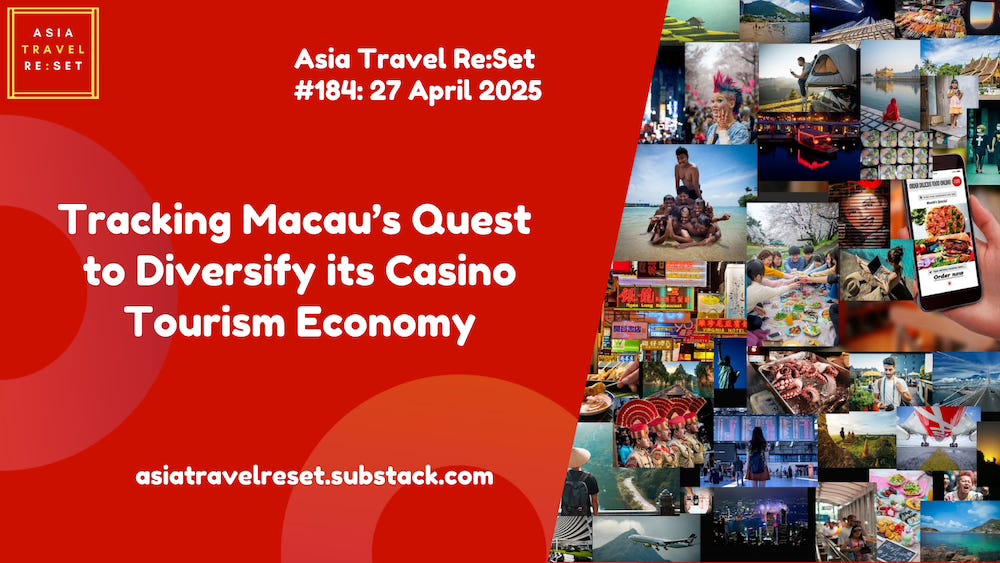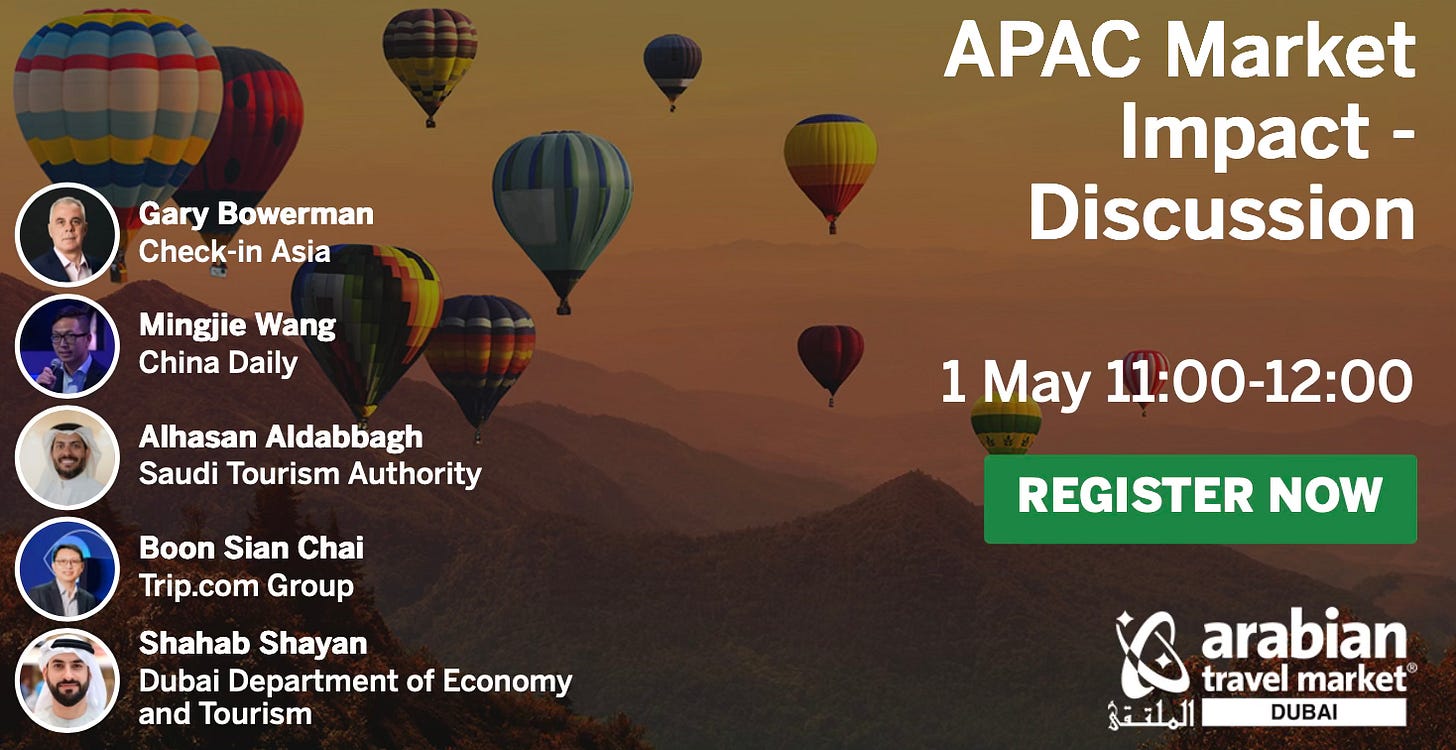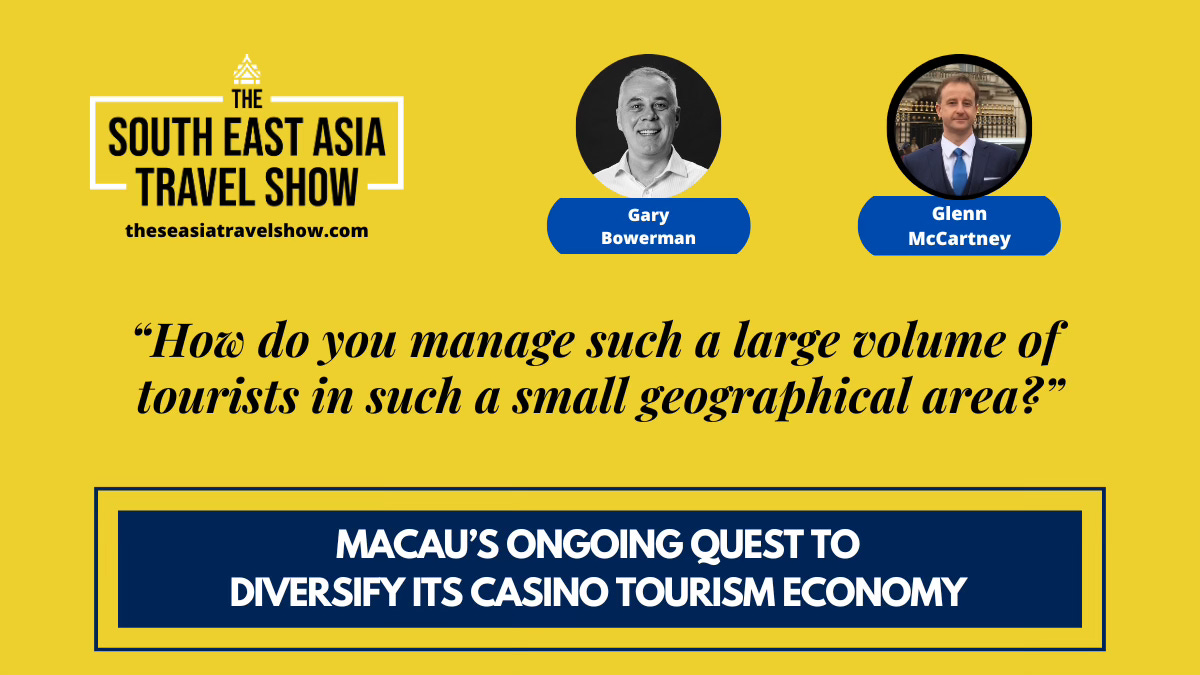Issue #184: Tracking Macau’s Quest to Diversify its Casino Tourism Economy
Can concert, medical and night tourism attract more South East Asian visitors?
Welcome to Issue 184 of Asia Travel Re:Set.
It’s been a while (Issue 119) since we took a proper dive into Macau, one of the most intriguing destinations in Asia Pacific.
This tiny island cluster spans just 33 sq km, but attracted 35 million visitors in 2024.
The ‘Las Vegas of Asia’ is now reinvesting its casino gaming revenues to diversify the tourism economy.
So, let’s follow that train of thought.
Thanks for checking in…
If you’re headed to the Arabian Travel Market this week in Dubai - see you there. I’ll be at the venue on Tuesday and Wednesday, and will join a stellar panel for the APAC Market Impact panel discussion on Thursday.
The durian harvest season is imminent in Malaysia, but what role will the prickly, football-sized fruit play in tourism and trade between ASEAN and China in 2025?
With Thailand, Vietnam, Malaysia, Philippines, Indonesia and Laos racing to expand their durian exports to China, 'Durian Tourism' is being used as a platform to showcase the so-called King of Fruits in diverse local contexts.
Meanwhile, last week's trade talks between Chinese President Xi Jinping and the leaders of Malaysia, Vietnam and Cambodia pushed passion fruits, coconuts, mangos and longans further up the export menu.
“So, while the White House pushes tariff talks from several time zones away, China and ASEAN are leveraging a shared competitive advantage: geography. Shipments of fresh foods in both directions are slated to proliferate.”
As Malaysia prepares for a season of durian garden parties, themed buffets and dessert menus, is Tropical Fruit Tourism now "a thing"?
Click to read my latest article, Durian diplomacy heats up in South East Asia, for the Asia Media Centre in Wellington.
Macau’s Quest to Diversify its Casino Tourism Economy
Casino Tourism. Concerts & Events. Medical Tourism. Night Economy. Live-streaming. Short-Stay Travel Culture. Many of the hot topics related to Macau's tourism economy diversification count similarities with nations in South East Asia.
There are 3 key differences, however:
↔️ Macau is the world city most reliant on tourism income as a proportion of GDP due to casino tourism. It famously outstripped Las Vegas for gaming revenue in 2006.
↔️ 91% of visitors hail from 2 source markets: China (70%) and Hong Kong (21%)
↔️ Macau is 22 times smaller than Singapore, but last year attracted more than twice the total of visitors.
This week, I was joined on The South East Asia Travel Show by Glenn McCartney, Associate Professor of Integrated Resort & Tourism Management at the University of Macau, to deconstruct the complex journey to diversify Macau’s tourism economy.
Glenn worked in Macau's hospitality industry during the handover from Portugal to China in 1999, and undertook research for the Macau Government on tourism and gaming development during the casino liberalisation period of the early 2000s.
Here are 5 pointers from our discussion, and - as ever - the full reveal comes from listening to the podcast.
1) Engaging ASEAN Markets
To reduce its reliance on visitors from China and Hong Kong, Macau is aggressively marketing to South East Asian tourists - and with some success. In Q1, “visitors from the Philippines, Indonesia, Malaysia and Singapore rose by 10.4%, 36.5%, 18.2% and 2.8% year-on-year respectively,” The Philippines is now Macau’s 5th-largest inbound market after China, Hong Kong, Taiwan and South Korea.
2) Encouraging More Overnight Stays
A primary reason for marketing into ASEAN markets (plus Japan, South Korea and - next - the Middle East) is geography. Although short-haul, the flight time means South East Asian visitors will likely stay a couple of nights. Total arrivals to Macau rose 11.1% y-o-y in Q1, but growth was heavily boosted by same-day visitors crossing the border from southern China, which rose 21.5% to 5.8 million from January-March.
3) Concert Tourism
Macau successfully uses concerts by young bands from South Korea, Hong Kong and China to attract Gen Z travellers. But do concert fans have to be in the stadium to enjoy the show? And, how can the host destination use interactive live-streaming to promote itself to fans watching online? “Research shows that live-streaming concerts can improve the destination’s image and influence future visits... The satisfaction derived from live-streaming experiences may impact future travel intentions.”
4) Medical Tourism
Medical tourism is a hot topic across Asia, and Macau is at the early stage of its journey. In 2024, Glenn produced a research paper and a travel trade symposium addressing the challenges for integrating traditional Chinese medicine and tourism. “The practitioners asked us about how they can engage with tourism and hospitality because it’s not something they are accustomed to. They are medical professionals day to day. That’s an important aspect to consider because bringing together the medical sector and the wellbeing of an individual with tourism has several challenges.”
5) Night Economy
Developing tourism after dark is a key concept in Asian cities that have discovered regional tourists tend to spend more during the daytime. “Nighttime tourism is a very important economic footprint for many sectors in many cities because you can spread much more spending. But when you extend tourism into the night, legislation and policy have to follow suit. You have to do resident impact studies, for instance, and you need a lot more research data points to plan the strategy.”
Click on the live link below to listen to Macau’s Ongoing Quest to Diversify its Casino Tourism Economy
Or search for The South East Asia Travel Show on any podcast app.
And, that’s a wrap for Issue 184.
Asia Travel Re:Set will be back next Sunday. Meantime, find me on LinkedIn.
Happy travels,
Gary







